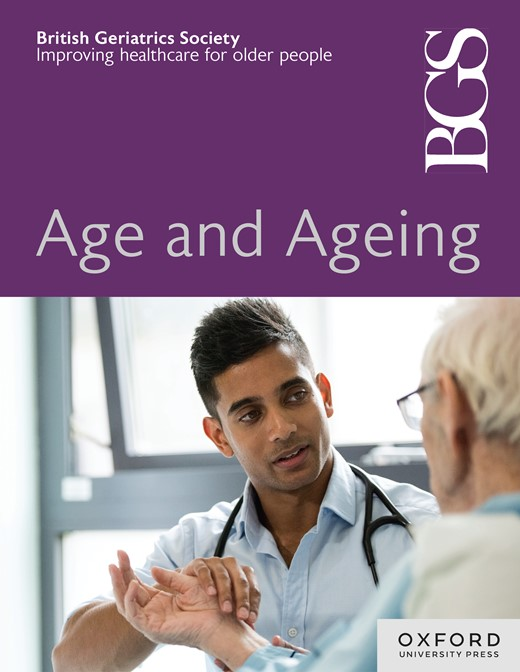3201 Evaluation of a new frailty on-call shift for geriatric SpRs at St Thomas' Hospital (STH)
IF 6
2区 医学
Q1 GERIATRICS & GERONTOLOGY
引用次数: 0
Abstract
Introduction Frailty-attuned acute hospital care is a vital component of integrated services for older people. The NHS Long Term Plan requires hospitals with major emergency departments to deliver 70 hours of acute frailty services each week. Workforce limitations often prevent services from meeting this target and expanding. Geriatric specialist registrars (SpRs) must gain experience in acute frailty so that the consultant workforce of the future can meet patient needs effectively. St Thomas’ Hospital (STH) Acute Frailty Service expanded hours of operation through the introduction of a frailty twilight SpR. The aim was to increase patients seen by the frailty service, enhance access to Comprehensive Geriatric Assessment (CGA) and provide learning opportunities in acute frailty. Method The twilight frailty SpR was introduced in October 2024 by re-allocating existing on-call resources, without using additional staffing. Retrospective data from April to November 2024 were analysed to compare patient numbers and service performance before and after implementation. Feedback was collected from SpRs on the learning opportunities and challenges encountered. Results Following introduction of the twilight frailty SpR, the average number of patients seen by the acute frailty team increased by 28.3%, from an average of 129 per month (April–September) to 166 per month (October–November). A survey of SpRs revealed that the majority felt twilight frailty shifts provided valuable learning experiences. Key benefits included increased autonomy and enhanced experience in CGA in an acute setting. Challenges included difficulties in discharging patients on the same day due to limited therapy support and the need for additional social care. Conclusion The introduction of a twilight frailty SpR extended acute frailty service hours and increased the number of patients receiving a CGA at the front door. SpRs have gained valuable experience in acute frailty management which is key in developing the consultant workforce of the future.3201评估圣汤姆斯医院老年急救人员的体弱多病随叫随到新轮班制度
针对老年人的急性住院护理是老年人综合服务的重要组成部分。国民保健制度长期计划要求拥有主要急诊科的医院每周提供70小时的急性虚弱服务。劳动力限制通常会阻止服务实现这一目标并进行扩展。老年专科注册医生(SpRs)必须在急性病方面积累经验,这样未来的咨询医生才能有效地满足病人的需要。圣多马医院急性病服务透过引入急性病专用设备,延长服务时间。其目的是增加虚弱服务看到的患者,增加获得综合老年评估(CGA)的机会,并提供急性虚弱的学习机会。方法2024年10月,在不增加人员的情况下,通过重新分配现有的随叫随到资源,引入薄暮脆弱SpR。分析2024年4月至11月的回顾性数据,比较实施前后的患者人数和服务表现。从战略规划人员中收集了关于学习机会和遇到的挑战的反馈。结果引入暮光衰弱SpR后,急性衰弱组平均就诊人数从4 - 9月平均每月129例增加到10 - 11月平均每月166例,增加28.3%。一项调查显示,大多数人认为黄昏脆弱的转变提供了宝贵的学习经验。主要的好处包括增加自主权和增强急性环境下CGA的经验。挑战包括由于治疗支持有限和需要额外的社会护理,难以在同一天让病人出院。结论暮色衰弱SpR的引入延长了急性衰弱的服务时间,增加了在前门接受CGA的患者数量。战略方案方案在急性虚弱管理方面获得了宝贵的经验,这是发展未来顾问队伍的关键。
本文章由计算机程序翻译,如有差异,请以英文原文为准。
求助全文
约1分钟内获得全文
求助全文
来源期刊

Age and ageing
医学-老年医学
CiteScore
9.20
自引率
6.00%
发文量
796
审稿时长
4-8 weeks
期刊介绍:
Age and Ageing is an international journal publishing refereed original articles and commissioned reviews on geriatric medicine and gerontology. Its range includes research on ageing and clinical, epidemiological, and psychological aspects of later life.
 求助内容:
求助内容: 应助结果提醒方式:
应助结果提醒方式:


